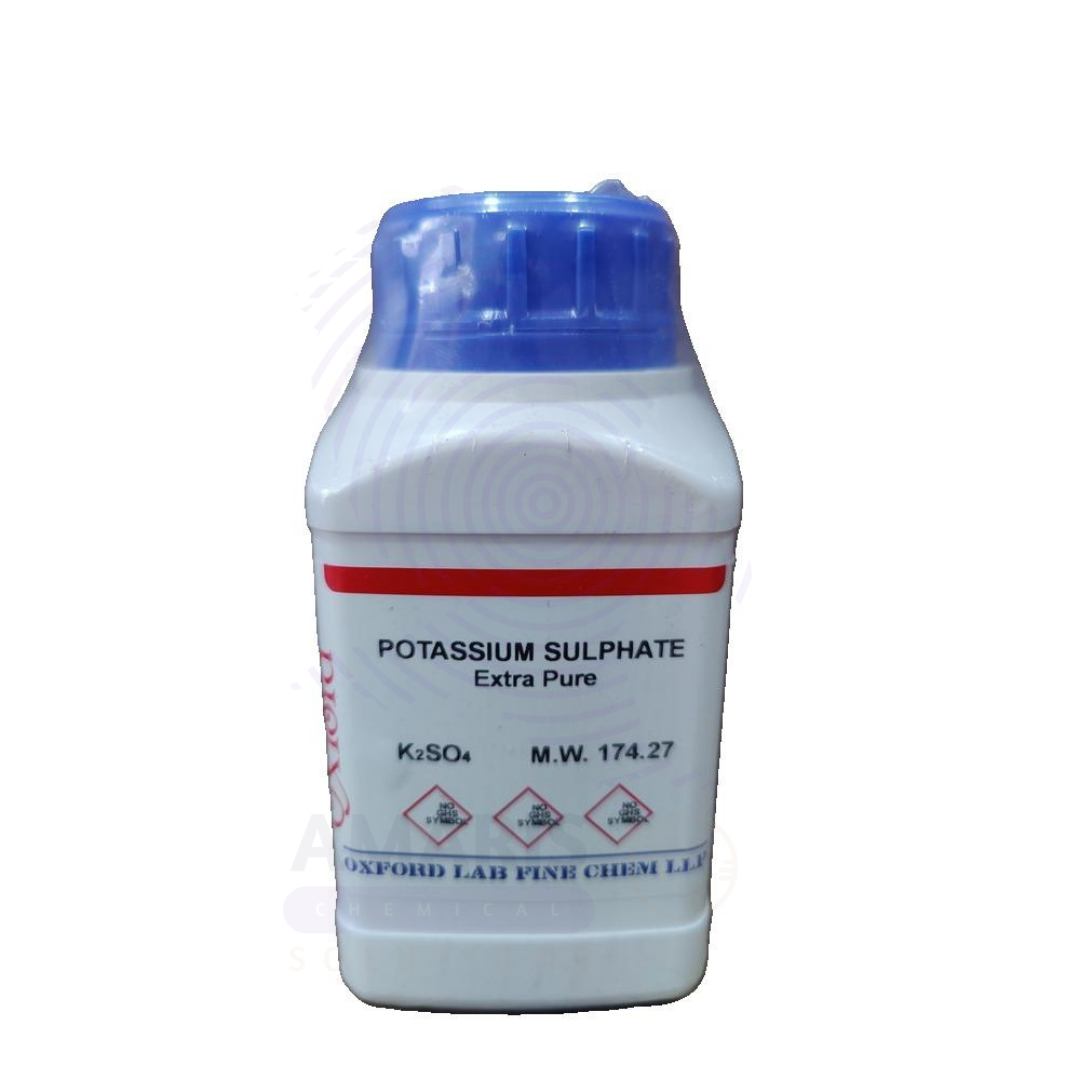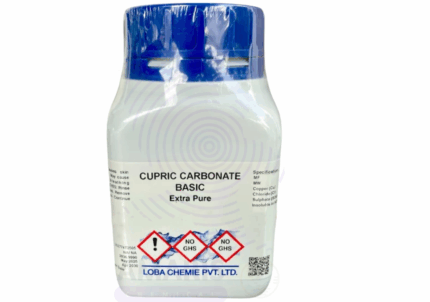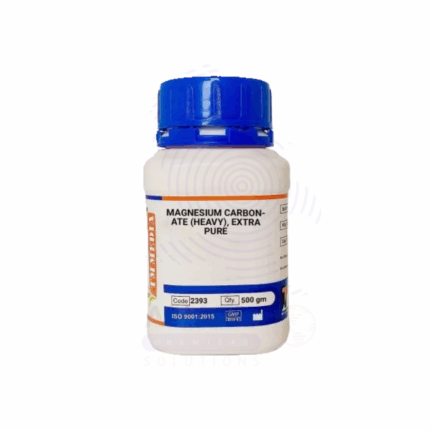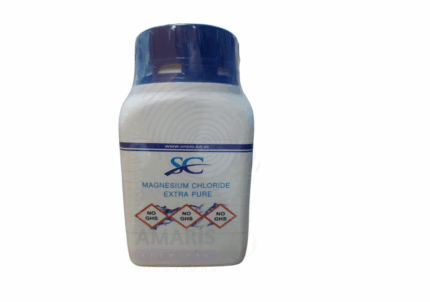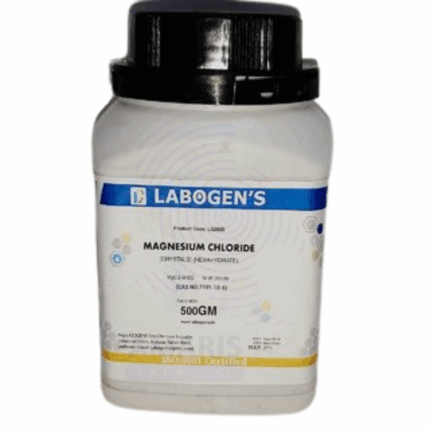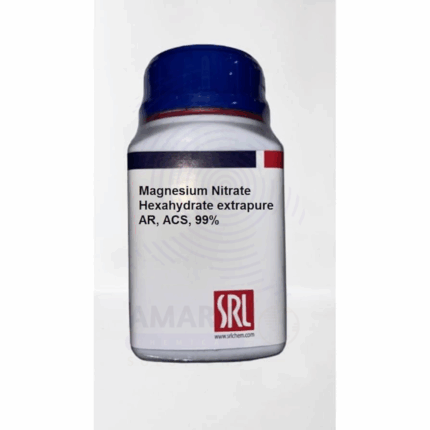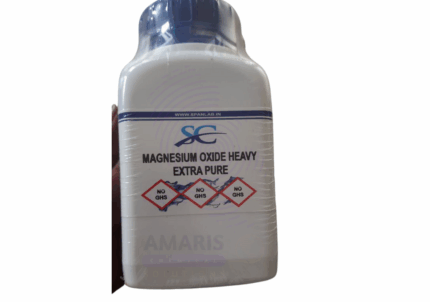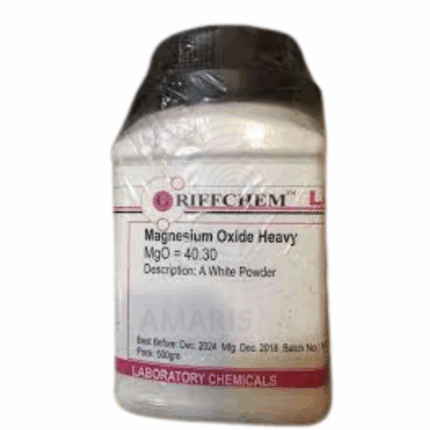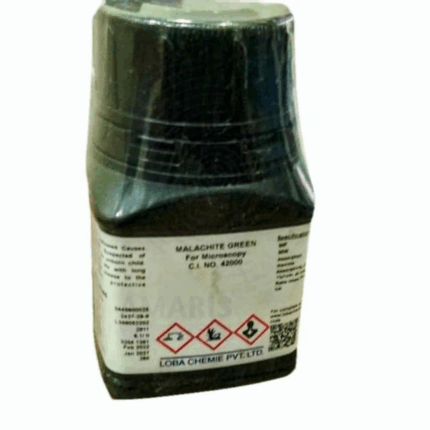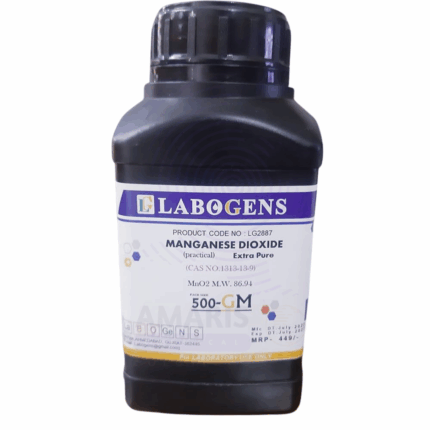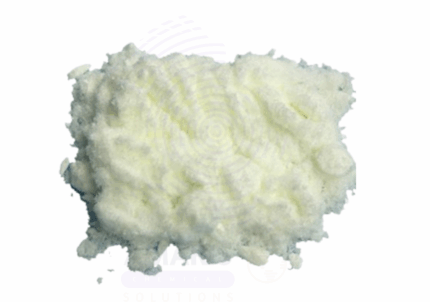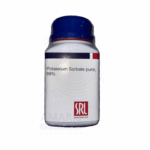
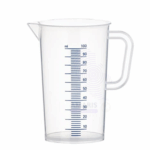
Potassium Sulphate Extra Pure
$ 19.11 Original price was: $ 19.11.$ 18.98Current price is: $ 18.98.
Potassium Sulphate Extra Pure is a premium-grade inorganic salt widely used in laboratories and industrial research. It serves as a reliable source of both potassium and sulfur, making it essential in analytical chemistry, fertilizer testing, and solution preparation. Its high solubility and chemical stability allow it to be used in qualitative and quantitative analysis, as well as in preparing culture media. The extra pure quality ensures that it contains minimal contaminants, providing consistent performance in sensitive experimental procedures, including high-purity formulations and calibration standards.
Potassium Sulphate Extra Pure
PRIMARY USES
- Agricultural Fertilizer (Lab/Analytical Grade)
- Provides essential potassium (K) and sulfur (S) for plant nutrition.
- Preferred where chloride-sensitive crops are involved (e.g., tobacco, fruits, vegetables).
- Useful in controlled lab trials simulating field conditions.
- Analytical Chemistry
- Used in standard solution preparations for potassium analysis.
- Serves as a source of potassium ions in various lab experiments.
- Pharmaceutical Applications
- Acts as an inert ingredient or excipient in certain formulations.
- May be used in buffer preparations or stability testing.
SECONDARY USES
- Industrial Manufacturing
- Employed in the production of glass, detergents, and certain dyes.
- Occasionally used in specialty ceramic processes.
- Food Industry (Limited Use)
- Can function as a processing aid or nutrient in food fermentation or yeast culture media.
- Education & Research
- Ideal for chemistry demonstrations on salt solubility, ionic bonding, and crystal structure.
- Suitable for use in titrations and reagent formulations.
1. Basic Identification Attributes
- Chemical Name: Potassium Sulfate
- CAS Number: 7778-80-5
- HS Code: 2833.29.00
- Molecular Formula: K₂SO₄
- Synonyms:
- Dipotassium sulfate
- Sulfuric acid dipotassium salt
- Arcanite
2. Physical & Chemical Properties
- Physical State: Solid (powder or crystalline granules)
- Color & Odor: White; odorless
- Boiling Point & Melting Point:
- Melting Point: ~1,069 °C
- Boiling Point: Decomposes before boiling
- Density/Specific Gravity: ~2.66 g/cm³
- Solubility:
- Water: Soluble (~12 g/100 mL at 20 °C)
- Insoluble in ethanol and organic solvents
- pH Level: ~5.5–8.5 (5% aqueous solution)
- Vapor Pressure & Volatility: Negligible vapor pressure
- Flash Point: Not applicable (non-flammable)
- Autoignition Temperature: Not applicable
- Viscosity: Not applicable (solid)
3. Safety & Hazard Attributes
- Hazard Class (GHS Classification):
- Not classified as hazardous
- Low acute toxicity
- NFPA Ratings:
- Health: 1
- Flammability: 0
- Reactivity: 0
- Exposure Limits:
- No OSHA PEL or ACGIH TLV established
- Reactivity:
- Stable under normal conditions
- Avoid strong acids and strong oxidizing agents
4. Storage & Handling Attributes
- Storage Conditions:
- Store in a cool, dry, well-ventilated area
- Keep tightly sealed and away from moisture
- Incompatible Materials:
- Strong acids, oxidizers
- Container Type:
- Plastic-lined fiber drums or HDPE containers
- Shelf Life & Expiration Date:
- Stable for several years if properly stored
- Special Handling Requirements:
- Use appropriate PPE (gloves, safety glasses) when handling large amounts
- Avoid dust inhalation
5. Regulatory & Compliance Attributes
- Regulatory Status:
- Listed under TSCA and REACH
- GRAS when used in food within approved limits
- Hazard Symbols (GHS Pictograms):
- None required
- Transportation Restrictions:
- Not classified as hazardous for transportation
- No UN number
- Waste Disposal Method:
- Dispose of in accordance with local and national regulations
- Non-hazardous waste—may be landfilled if uncontaminated
6. Environmental & Health Impact
- Ecotoxicity:
- Low environmental toxicity
- May contribute to nutrient loading in water systems
- Persistence in Environment:
- Dissolves and disperses in water readily
- Carcinogenicity/Mutagenicity:
- Not classified as carcinogenic or mutagenic
- Biodegradability:
- Inorganic salt—not biodegradable, but environmentally benign
SAFETY PRECAUTIONS
Personal Protective Equipment (PPE):
- Standard lab coat
- Nitrile or neoprene gloves
- Safety goggles or face shield
- Dust mask or respirator if dust is generated
Handling:
- Avoid creating or inhaling dust
- Do not ingest or get in eyes
- Wash hands and exposed areas thoroughly after handling
- Handle in a well-ventilated area
- Avoid contact with incompatible substances (e.g., strong acids or bases)
Storage:
- Store in a tightly closed container
- Keep in a dry, cool, and well-ventilated place
- Protect from moisture and humidity
- Store away from strong oxidizing agents
FIRST AID MEASURES
Inhalation:
- Remove from exposure to fresh air
- Keep at rest and comfortable for breathing
- Seek medical attention if symptoms such as coughing or difficulty breathing occur
Skin Contact:
- Wash thoroughly with soap and water
- Remove contaminated clothing
- Seek medical attention if irritation develops
Eye Contact:
- Rinse cautiously with water for at least 15 minutes
- Hold eyelids open and flush continuously
- Get medical help if irritation persists
Ingestion:
- Rinse mouth with water
- Do not induce vomiting
- Seek medical attention if large amounts are ingested or symptoms appear
FIRE FIGHTING MEASURES
Flammability:
- Non-flammable under normal conditions
Extinguishing Media:
- Use appropriate media for surrounding fire (water spray, foam, CO₂, or dry chemical)
Hazardous Combustion Products:
- Sulfur oxides (SOₓ), potassium oxides may be released during thermal decomposition
Firefighter Protection:
- Wear full protective gear and self-contained breathing apparatus (SCBA)
- Approach fire from upwind to avoid toxic fumes


 Preservatives(food)
Preservatives(food) Flavor Enhancers
Flavor Enhancers Acidulants
Acidulants Sweeteners
Sweeteners Antioxidants
Antioxidants Colorants(food)
Colorants(food) Nutraceutical Ingredients (food)
Nutraceutical Ingredients (food) Nutrient Supplements
Nutrient Supplements Emulsifiers
Emulsifiers
 Collectors
Collectors Dust Suppressants
Dust Suppressants Explosives and Blasting Agents
Explosives and Blasting Agents Flocculants and Coagulants
Flocculants and Coagulants Frothers
Frothers Leaching Agents
Leaching Agents pH Modifiers
pH Modifiers Precious Metal Extraction Agents
Precious Metal Extraction Agents
 Antioxidants(plastic)
Antioxidants(plastic) Colorants (Pigments, Dyes)
Colorants (Pigments, Dyes) Fillers and Reinforcements
Fillers and Reinforcements Flame Retardants
Flame Retardants Monomers
Monomers Plasticizers
Plasticizers Polymerization Initiators
Polymerization Initiators Stabilizers (UV, Heat)
Stabilizers (UV, Heat)
 Antifoaming Agents
Antifoaming Agents Chelating Agents
Chelating Agents Coagulants and Flocculants
Coagulants and Flocculants Corrosion Inhibitors
Corrosion Inhibitors Disinfectants and Biocides
Disinfectants and Biocides Oxidizing Agents
Oxidizing Agents pH Adjusters
pH Adjusters Scale Inhibitors( water)
Scale Inhibitors( water)
 Antioxidants(cosmetic)
Antioxidants(cosmetic) Emollients
Emollients Fragrances and Essential Oils
Fragrances and Essential Oils Humectants
Humectants Preservatives
Preservatives Surfactants(cosmetic)
Surfactants(cosmetic) Thickeners
Thickeners UV Filters
UV Filters
 Fertilizers
Fertilizers Soil Conditioners
Soil Conditioners Plant Growth Regulators
Plant Growth Regulators Animal Feed Additives
Animal Feed Additives Biostimulants
Biostimulants Pesticides (Herbicides, Insecticides, Fungicides)
Pesticides (Herbicides, Insecticides, Fungicides)
 Active Pharmaceutical Ingredients (APIs)
Active Pharmaceutical Ingredients (APIs) Excipients
Excipients Solvents(pharmaceutical)
Solvents(pharmaceutical) Antibiotics
Antibiotics Antiseptics and Disinfectants
Antiseptics and Disinfectants Vaccine Adjuvants
Vaccine Adjuvants Nutraceutical Ingredients (pharmaceutical)
Nutraceutical Ingredients (pharmaceutical) Analgesics & Antipyretics
Analgesics & Antipyretics
 Analytical Reagents
Analytical Reagents Solvents(lab)
Solvents(lab) Chromatography Chemicals
Chromatography Chemicals Spectroscopy Reagents
Spectroscopy Reagents microbiology-and-cell-culture-reagents
microbiology-and-cell-culture-reagents Molecular Biology Reagents
Molecular Biology Reagents Biochemical Reagents
Biochemical Reagents Inorganic and Organic Standards
Inorganic and Organic Standards Laboratory Safety Chemicals
Laboratory Safety Chemicals Specialty Laboratory Chemicals(Special Laboratory Equipment)
Specialty Laboratory Chemicals(Special Laboratory Equipment)
 Demulsifiers
Demulsifiers Hydraulic Fracturing Fluids
Hydraulic Fracturing Fluids Scale Inhibitors(oil)
Scale Inhibitors(oil) Surfactants(oil)
Surfactants(oil) Drilling Fluids
Drilling Fluids
 Dyes and Pigments
Dyes and Pigments Bleaching Agents
Bleaching Agents Softening Agents
Softening Agents Finishing Agents
Finishing Agents Antistatic Agents
Antistatic Agents
 Admixtures
Admixtures Waterproofing Agents
Waterproofing Agents Sealants and Adhesives
Sealants and Adhesives Curing Compounds
Curing Compounds Concrete Repair Chemicals
Concrete Repair Chemicals Anti-Corrosion Coatings
Anti-Corrosion Coatings
 Surfactants(cleaning)
Surfactants(cleaning) Builders
Builders Enzymes
Enzymes Solvents (Cleaning)
Solvents (Cleaning) Fragrances
Fragrances
 Electronic Chemicals
Electronic Chemicals Catalysts
Catalysts Lubricants
Lubricants Photographic Chemicals
Photographic Chemicals Refrigerants
Refrigerants Automotive chemicals
Automotive chemicals Pyrotechnic Chemicals
Pyrotechnic Chemicals
 Biodegradable Surfactants
Biodegradable Surfactants Bio-based Solvents
Bio-based Solvents Renewable Polymers
Renewable Polymers Carbon Capture Chemicals
Carbon Capture Chemicals Wastewater Treatment Chemicals
Wastewater Treatment Chemicals
 Pigments
Pigments Solvents(paint)
Solvents(paint) Specialty Coatings
Specialty Coatings Binders/Resins
Binders/Resins Additives
Additives Driers
Driers Anti-Corrosion Agents
Anti-Corrosion Agents Functional Coatings
Functional Coatings Application-Specific Coatings
Application-Specific Coatings
 Fresh Herbs
Fresh Herbs Ground Spices
Ground Spices Whole Spices
Whole Spices Spice Blends
Spice Blends Dried Herbs
Dried Herbs
 Leavening Agents
Leavening Agents Dough Conditioners
Dough Conditioners Flour Treatments
Flour Treatments Fat Replacers
Fat Replacers Decoratives
Decoratives Preservatives(baking)
Preservatives(baking)
 Plasticizers & Softeners
Plasticizers & Softeners Reinforcing Agents
Reinforcing Agents Adhesion Promoters
Adhesion Promoters Vulcanizing Agents
Vulcanizing Agents Antidegradants
Antidegradants Blowing Agents
Blowing Agents Fillers & Extenders
Fillers & Extenders Accelerators & Retarders
Accelerators & Retarders